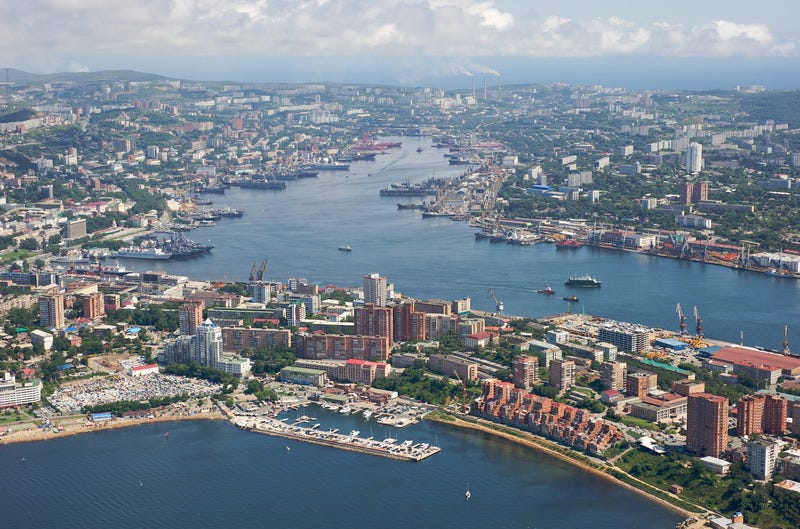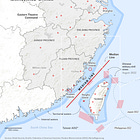China’s Quiet Conquest of Siberia
Moscow and Beijing claim an "alliance without limits". But the truth is very different: China is ruthlessly exploiting Russia's isolation in neocolonialist fashion. The Russian Far East is first up.
Don’t miss our special: “In Maps: China’s Military Activity in the Indo-Pacific”.

NOTE: I have been telling you for 25 years about China’s designs on Siberia. China lost Outer Manchuria — the modern Russian Far East — in the “unequal treaties” of Aigun and Peking. They want it back. They want it every bit as much as they once wanted Hong Kong and still want Taiwan.
But why stop there? Siberia is resource-rich, and China is resource-starved. Moreover, China has cash and technology to develop those resources which Russia lacks. And China plays the long game: it has flooded Asiatic Russia with illegal aliens for decades. It is now exploiting Russia’s isolation and weakness to assert control.
How will this end? Nowhere good for Russia, unless it can pull out of its current tailspin and avoid circling the Chinese drain. Donald Trump is providing an off-ramp. Will Putin take it in time? — RDM
by Tamuz Itai and Rod D. Martin
September 12, 2025
Imagine walking through the streets of Blagoveshchensk or Vladivostok in Russia’s Far East. What catches the eye isn’t the Soviet-era architecture or the vast Siberian landscape; rather, it’s Chinese everywhere.
Shop signs, menus, hotel brochures, and even some traffic signs now feature Mandarin characters. Late in 2024, locals in Blagoveshchensk photographed new downtown direction signs in Chinese only, sparking questions that led to bilingual replacements near the city’s cross-border bridge.
This isn’t annexation — yet — but it’s a visible marker of a profound shift: These cities are reorienting southward, chasing trade, tourism, and investment from across the Amur River.
Two new hard links have, in recent years, shrunk the frontier. The first road bridge between Russia and China, the Blagoveshchensk–Heihe Bridge, opened in June 2022. The first rail bridge, the Tongjiang–Nizhneleninskoye railway bridge, opened to traffic in November 2022. Those crossings turned the river from a moat into a main street, moving people, timber, ore, and consumer goods in both directions.
So is China taking over Russia’s Far East?
Yes: not with tanks, but through economics, infrastructure, and subtle influence that bind the region more tightly to Beijing than to Moscow.
Eastern Russia’s Strategic Riches
This phenomenon reflects broader dynamics in eastern Russia, a vast expanse from Lake Baikal to the Pacific that covers more than 5 million square miles, or 77 percent of Russia’s territory. Far from empty tundra, it’s a resource powerhouse that has drawn covetous eyes from global powers for centuries.




